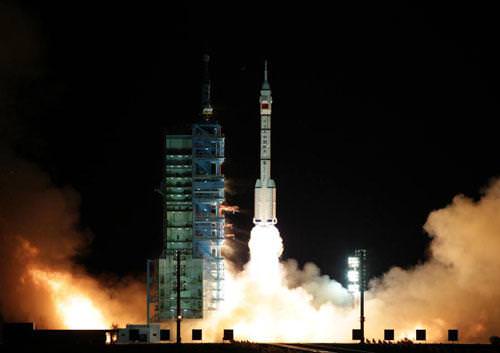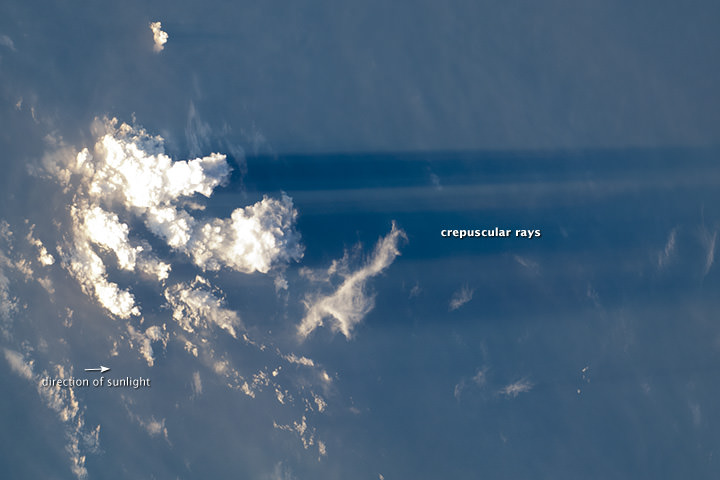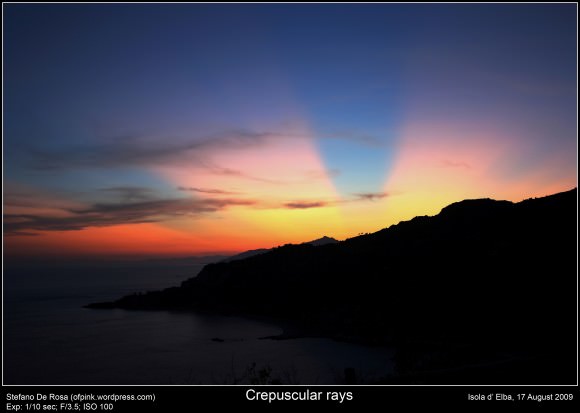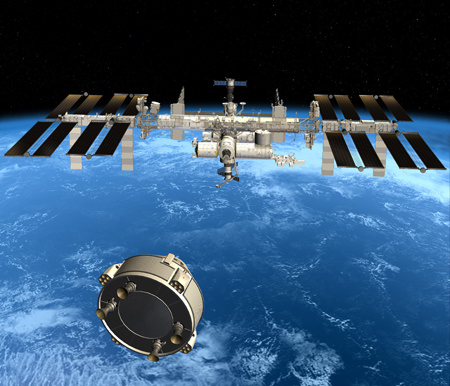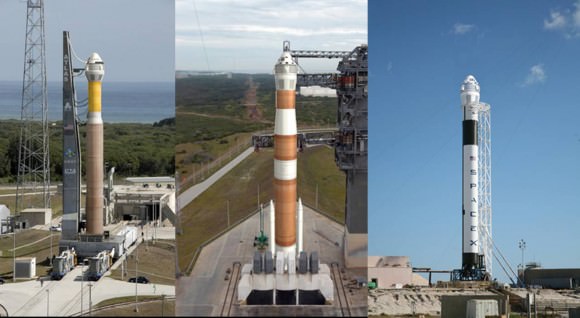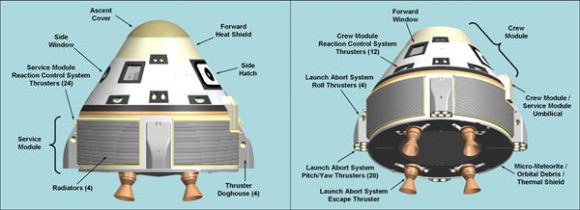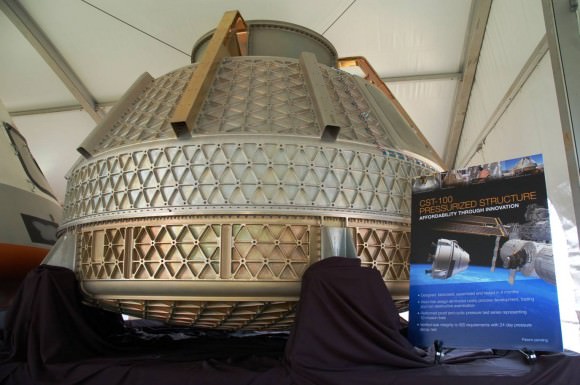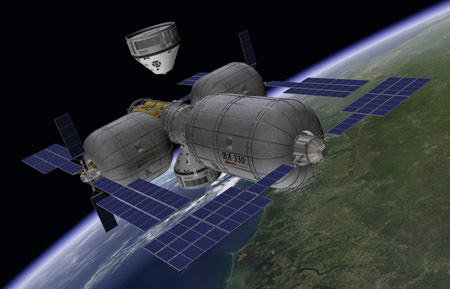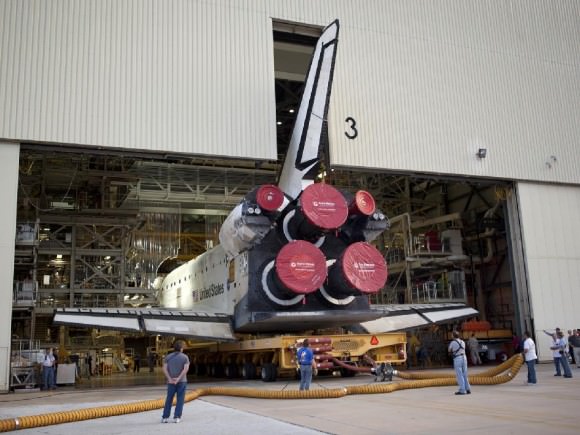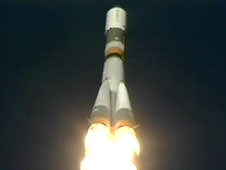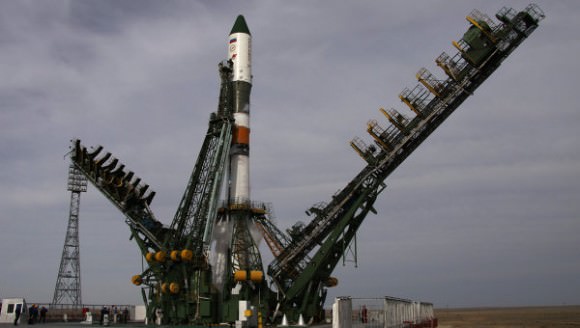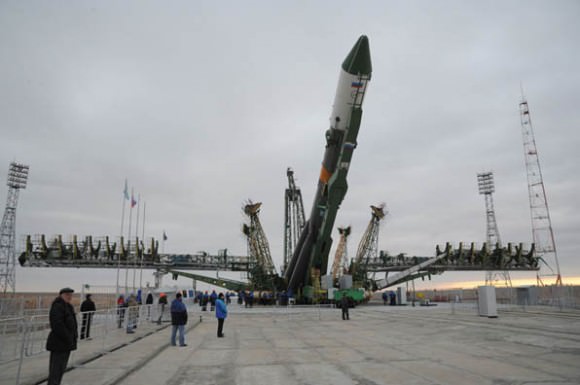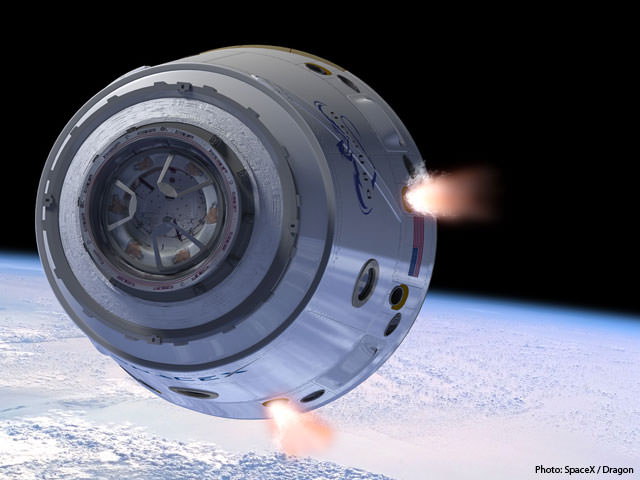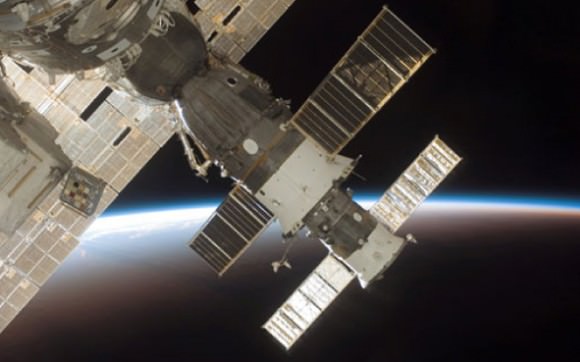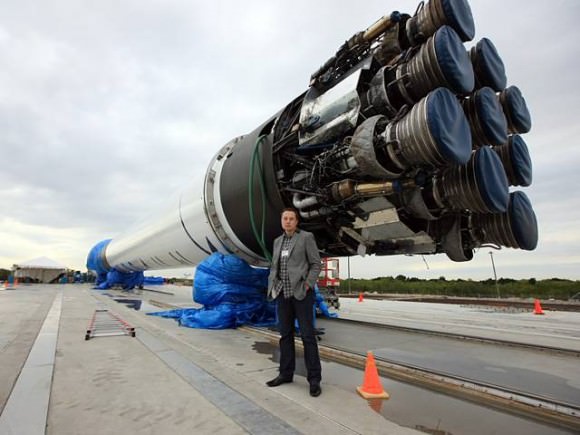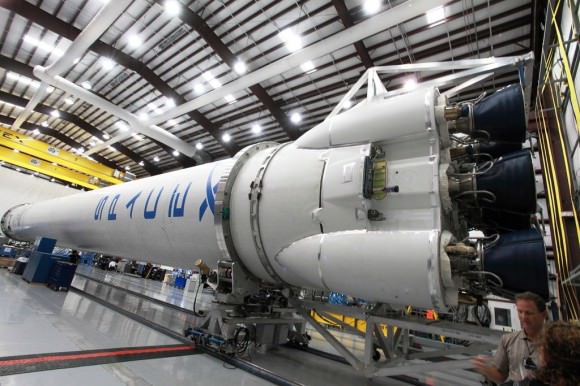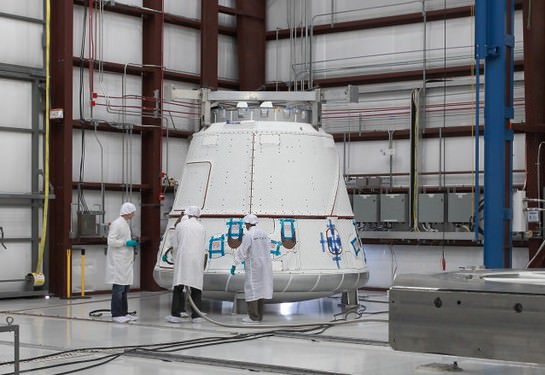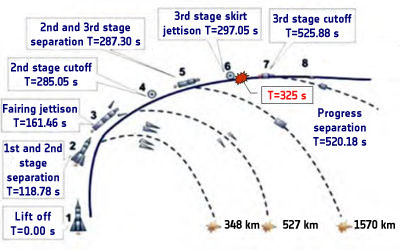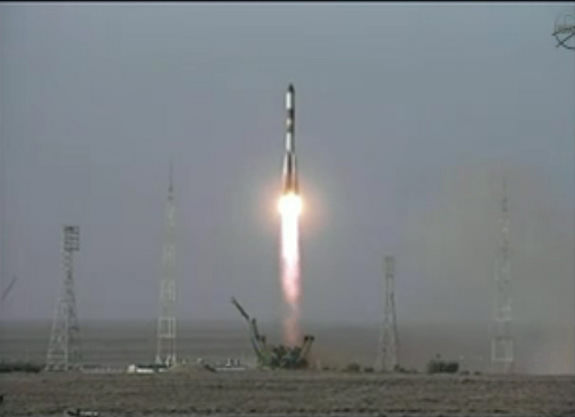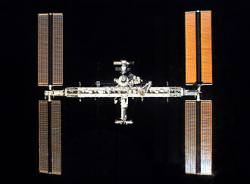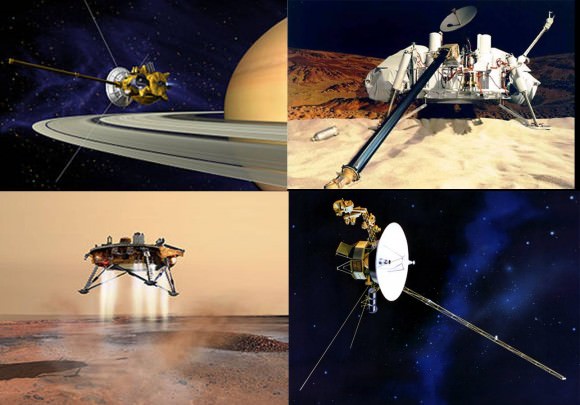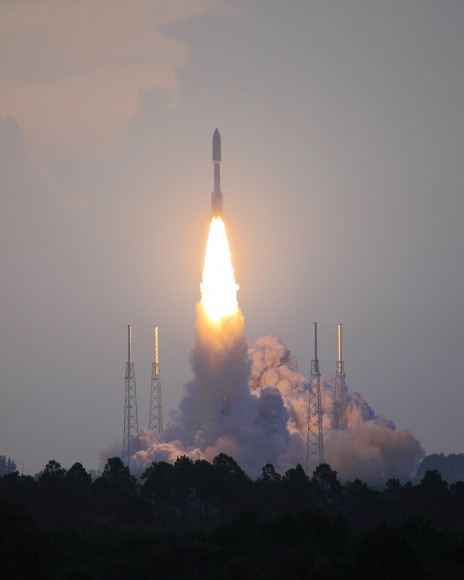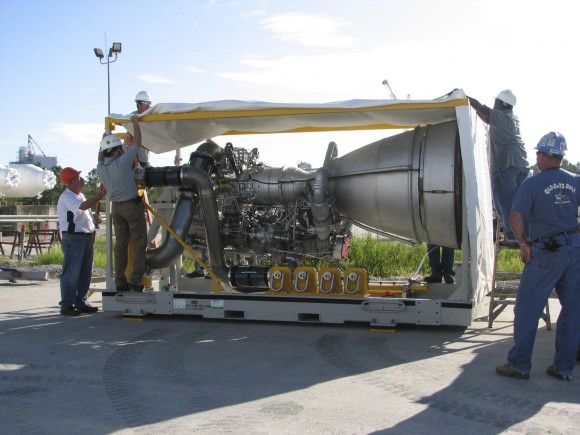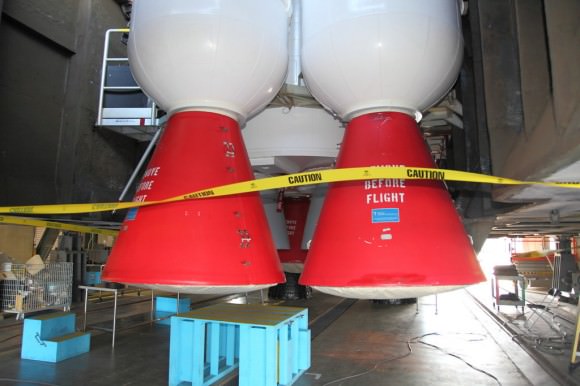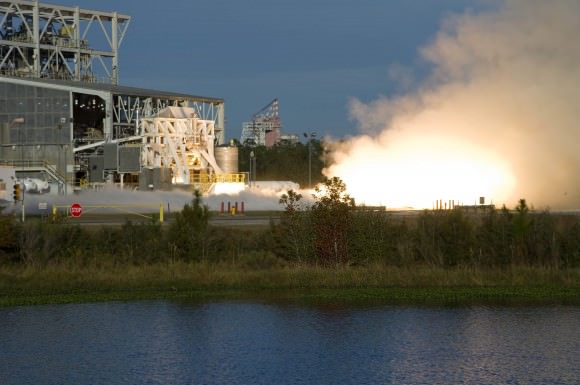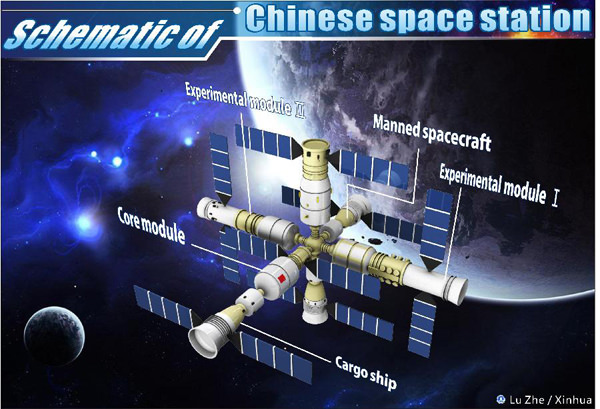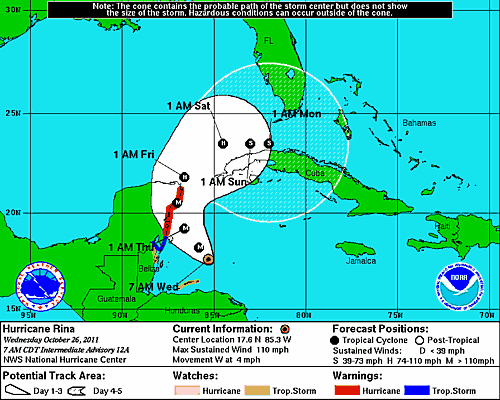[/caption]
China today launched the Shenzhou-8 capsule on a historic mission to accomplish the nation’s first ever docking in space with another vehicle, already in orbit, and pave the way toward’s China’s true ambition – constructing a multi-module space station by 2020.
The unpiloted Shenzhou-8 streaked skywards today in a blinding flash atop a powerful and upgraded Long March 2F/Y8 carrier rocket in the early morning darkness and precisely on time at 5:58 a.m. Beijing time (5:58 p.m. EDT) from the Jiuquan Satellite Launch Center in the Gobi Desert in northwest China. Viewers could watch a live CCTV broadcast from state media broadcast in English.
The Long March first stage is augmented with four liquid fueled strap on boosters. Spectacular TV views show the boosters and payload fairings being jettisoned.
The goal of the mission is for China to master critical and complex rendezvous and docking technologies and link up with China’s 1st orbiting prototype space station module dubbed Tiangong-1, or Heavenly Palace-1.
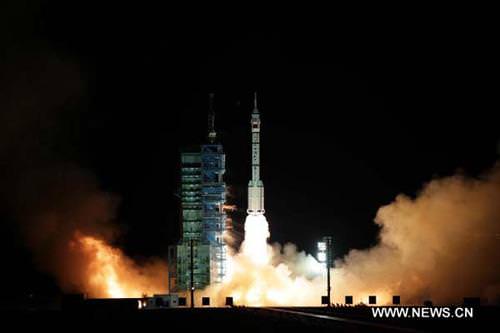
The historic docking of Shenzhou-8 with Tiangong-1 will be a highly significant achievement and is set to take place after the capsule catches up with the module in two days time. Tiangong-1 has been orbiting Earth since it was launched a month ago from the same launch site.
“The Launch of Shenzhou 8 has been a great success !”, announced Gen. Chang Wanquan, the Commander in Chief of China’s manned space program known as the China Manned Space Engineering (CMSE) Project. Chang, dressed in his military uniform, is Commanding Officer of Tiangong 1/Shenzhou 8 Rendezvous and Docking Mission Headquarters, and director of the PLA (Peoples Liberation Army) General Armaments Department.
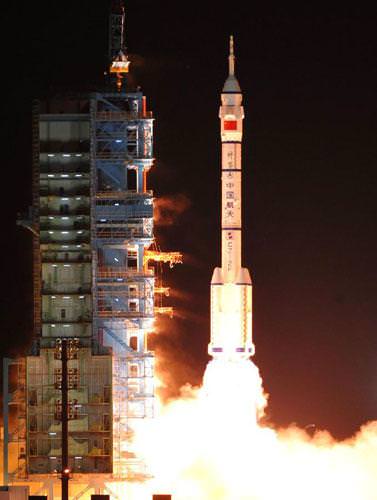
“The Shenzhou 8 spaceship has entered at 6:07:53 its operating orbit with a perigee height of 200 km and apogee height of 329 km.”
The unmanned Shenzhou capsule entered orbit 585 seconds after liftoff while flying over the Pacific Ocean and placed the spacecraft into an initial elliptical orbit.
Shenzhou-8 will conduct five orbital maneuvers by firing its on board thrusters to match orbits and close in Tiangong-1 over the next two days and is on course for the linkup. Each vehicle weighs about 8 tons.
The two vehicles will remain docked for 12 days. Shenzhou-8 will then undock and separate and attempt another practice docking.
After several more days of joint operations the Shenzhou-8 capsule will depart and reenter the earth as though it had a crew.
Shenzhou-8 is fully equipped to carry an astronaut crew and even food and water are stored on board.
Today’s success sets the stage for two Chinese manned missions to follow in 2012, namely Shenzhou 9 and Shenzhou 10. They will each carry two or three astronauts.

The Tiangong-1 target module was launched from Jiuquan on September 29 and is functioning perfectly. Its orbit was already lowered and the ship was rotated 180 degrees in anticipation of today’s liftoff.
The Long March 2F booster is the tallest, heaviest and most powerful in China’s rocket arsenal.
China’s state run CCTV carried the launch live and provided excellent and informative commentary that harkened back to the glory days of NASA’s Apollo moon landing project. The Chinese government and people take great pride in the accomplishments of their space program which is vaulting China to the forefront of mastering technologically difficult achievements.
Long range tracking cameras and on board cameras captured exquisite views of Shenzhou-8 maneuver all the way to orbit, including separation of the first stage booster, jettison of the payload fairing, firing of the 2nd stage engines, deployment of the twin solar arrays, live shots inside the capsule and beautiful views of mother Earth some 200 kilometers below.
Read Ken’s related features about China’s Shenzhou-8, Tiangong-1 and Yinghou-1
Shenzhou-8 rolled out for Blastoff to China’s 1st Space Station on November 1
Bizarre Video: China’s Tiangong 1 Space Lab Animation set to ‘America the Beautiful’ Soundtrack
China Blasts First Space Lab Tiangong 1 to Orbit
China set to ‘Leap Forward in Space’ as Tiangong 1 Rolls to Launch Pad
Phobos-Grunt and Yinghou-1 Arrive at Baikonur Launch Site to tight Mars Deadline

